The Bimaran Casket – Rare Golden Artifact Found In Ancient Stupa
A. Sutherland - AncientPages.com - This tiny artifact, the Bimaran Casket, is only 7 cm (2 3/4 in) high. It is made of gold and was discovered without its lid. The bottom of the artifact is decorated with a lotus, which symbolizes purity and beauty in Hinduism and Buddhism.
The Bimaran relic is cylindrical and covered with relief carvings of eight figures hammered from the reverse. CC BY-SA 3.0 - Photo credits: British Museum
The artifact, probably Indo-Greek work, is a small ancient Buddhist box for relics and represents a rare iconography.
It was found inside the stupa chamber at Bimaran, an ancient site northwest of India, on the right bank of the Kabul river.
His discoverer is the archaeologist Charles Masson (1800–1853), whose real name was James Lewis, a British East India Company soldier, traveler, and explorer.
The Bimaran Casket was discovered in a form-fitting steatite box. The inscription on the small container reads as follows:
The steatite box contained the Bimaran casket. Photo: British Museum. Personal photograph 2005 - CC BY-SA 3.0
"Sacred gift of Shuvaraksita, son of Munjavamda, presented for Lord's relics, in honor of all Buddhas."
(translated by G. Fussman).
The Indo-Scythian coins found inside were in pristine condition, apparently uncirculated, and are now in the British Museum, London
In the region of Bimaran, archaeological excavations revealed remains of four larger stupas and at least two groups of votive stupas. The first stupa is 38.40 meters in circumference but in fallen into partial ruin or decay.
It has shallow decorative pillars attached to a wall, and inside, among jewelry and coins, was a steatite vase and cover, both covered with inscriptions in kharoshthi.
The Kharosthi script was invented sometime in the 3rd century BC and possibly derived from the Aramaic script. It was used in Gandhara, an ancient kingdom in what is now the northwest of Pakistan, and the Jalalabad district of Afghanistan. Kharosthi texts have also been found along the Silk Road in Bactria, Kushan, Sogdia, and parts of China.
The coins of Azes II found inside the Bimaran casket. Photo: British Museum. Personal photograph - world imaging, 2005 - CC BY-SA 3.0
There was also found the Bimaran Casket, decorated with rubies and depicting scenes of Buddha. The Casket is now at the British Museum in London.
The second stupa, 43.90 meters in circumference, lies in the center of the village. It stands on a square platform and contains a steatite vase, jewelry, gold ornaments, and coins. The third is 33 meters in circumference and is surrounded by many mounds and two parallel lines of votive stupas.
Inside was a silver reliquary of jewels and coins. The fourth is 43.9 meters in circumference and is surrounded by extensive building debris. It contained nothing. In addition to the stupas, there is a complex of six artificial caves in the foothills to the north.
Masson was the first European to discover the ruins of Harappa near Sahiwal in Punjab, now in Pakistan.
When Masson found the Casket during his work in Afghanistan between 1833 and 1838, it contained coins of the Indo-Scythian king Azes II, believed never existed, and finds attributed to his reign probably should be reassigned to Azes I. Therefore, researchers suggested a date from around 30 BC to around 10 BC.
The Bimaran relic is cylindrical and covered with relief carvings of eight figures hammered from the reverse. It includes two groups of Brahma, Buddha, and Indra on either face and two devotees. The artifact is also sometimes dated to a slightly posterior date of 50 CE, based on a redeposition theory, and sometimes much later (2nd century CE), based on artistic assumptions.
The inscription informs that the Casket contained some of the Buddha's bones. However, the lid and the relics were missing by the time this artifact was found.
The small gold carving of Buddha in this Casket is considered the earliest anthropomorphic representation of the Buddha.
Written by – A. Sutherland - AncientPages.com Senior Staff Writer
Updated on March 24, 2023
Copyright © AncientPages.com All rights reserved. This material may not be published, broadcast, rewritten or redistributed in whole or part without the express written permission of AncientPages.com
Expand for referencesReferences:
Le May, Reginald. "The Bimaran Casket." The Burlington Magazine for Connoisseurs 82, no. 482 (1943): 116-23.
More From Ancient Pages
-
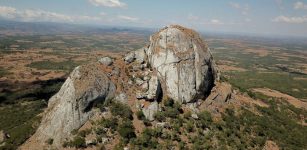 Ancient DNA Reveals Surprises About Life Of Early Africans
Archaeology | Feb 24, 2022
Ancient DNA Reveals Surprises About Life Of Early Africans
Archaeology | Feb 24, 2022 -
 Strange Reports Of A Mysterious Stone-Throwing Phenomenon And Invisible Entity Encountered Worldwide
Featured Stories | Dec 4, 2023
Strange Reports Of A Mysterious Stone-Throwing Phenomenon And Invisible Entity Encountered Worldwide
Featured Stories | Dec 4, 2023 -
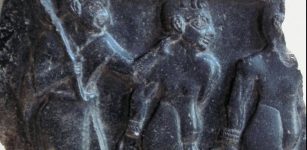 First Sumerian Revolt – People Oppose The Harsh Akkadian Empire
Featured Stories | Apr 14, 2023
First Sumerian Revolt – People Oppose The Harsh Akkadian Empire
Featured Stories | Apr 14, 2023 -
 Ancient Mexicans’ Precise Solar Observations Fed Millions – Remarkable Farming Calendar Invented
Archaeoastronomy | Dec 12, 2022
Ancient Mexicans’ Precise Solar Observations Fed Millions – Remarkable Farming Calendar Invented
Archaeoastronomy | Dec 12, 2022 -
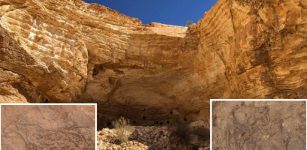 Remarkable Ancient Animal Engravings Discovered In Unknown Cave In Sinai
Archaeology | May 1, 2020
Remarkable Ancient Animal Engravings Discovered In Unknown Cave In Sinai
Archaeology | May 1, 2020 -
 Huge Ancient Roman Kovachevsko Kale Fortress And Discovery Of A Horreum In Bulgaria
Civilizations | Dec 15, 2015
Huge Ancient Roman Kovachevsko Kale Fortress And Discovery Of A Horreum In Bulgaria
Civilizations | Dec 15, 2015 -
 Shining Ones, Archimedes Death Ray And Mystery Of Vitrified Forts In Scotland
Ancient Technology | May 13, 2015
Shining Ones, Archimedes Death Ray And Mystery Of Vitrified Forts In Scotland
Ancient Technology | May 13, 2015 -
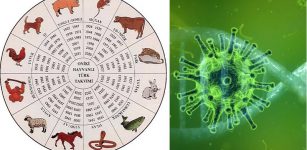 Ancient Calendar Predicted The Coronavirus And Other Disasters In 2020 – History Researcher Says
News | Mar 24, 2020
Ancient Calendar Predicted The Coronavirus And Other Disasters In 2020 – History Researcher Says
News | Mar 24, 2020 -
 Central European Early Iron Age ‘Hascherkeller’ Reveals Its Secrets
Archaeology | Jul 20, 2022
Central European Early Iron Age ‘Hascherkeller’ Reveals Its Secrets
Archaeology | Jul 20, 2022 -
 3,600-Year-Old Bronze Dagger Made By The Minoan Civilization Found On Ancient Shipwreck
Archaeology | Sep 13, 2024
3,600-Year-Old Bronze Dagger Made By The Minoan Civilization Found On Ancient Shipwreck
Archaeology | Sep 13, 2024 -
 Unique Bronze Age Treasure Discovered In Swedish Forest Was A Gift To Norse Gods
Archaeology | Apr 30, 2021
Unique Bronze Age Treasure Discovered In Swedish Forest Was A Gift To Norse Gods
Archaeology | Apr 30, 2021 -
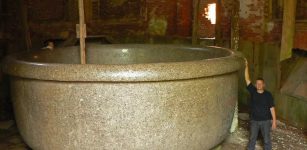 Giant Bath Tub Built For Tsar Alexander I – Why Was It So Large?
Featured Stories | Jul 11, 2018
Giant Bath Tub Built For Tsar Alexander I – Why Was It So Large?
Featured Stories | Jul 11, 2018 -
 Vikings Had Dark Humor And Joked Even During Deadly Battles
Vikings | Aug 20, 2024
Vikings Had Dark Humor And Joked Even During Deadly Battles
Vikings | Aug 20, 2024 -
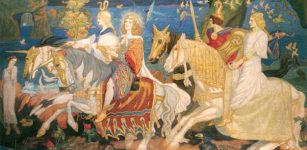 Tuatha De Danann: Mythical Race Of God-Like Beings With Supernatural Abilities In Celtic Mythology
Celtic Mythology | Feb 26, 2019
Tuatha De Danann: Mythical Race Of God-Like Beings With Supernatural Abilities In Celtic Mythology
Celtic Mythology | Feb 26, 2019 -
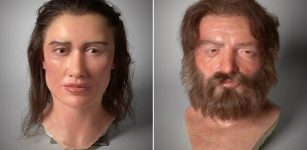 Facial Reconstruction Of Ancient Inhabitants Of Sagalassos Make Them Almost Real
Archaeology | May 31, 2019
Facial Reconstruction Of Ancient Inhabitants Of Sagalassos Make Them Almost Real
Archaeology | May 31, 2019 -
 Stonehenge May Have Aligned With The Moon As Well As The Sun
Featured Stories | Jun 4, 2024
Stonehenge May Have Aligned With The Moon As Well As The Sun
Featured Stories | Jun 4, 2024 -
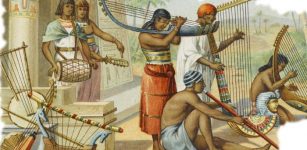 How Important Was Music In Ancient Egypt?
Ancient History Facts | Jan 16, 2021
How Important Was Music In Ancient Egypt?
Ancient History Facts | Jan 16, 2021 -
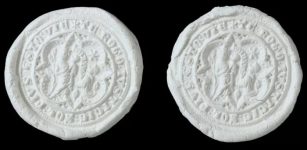 ‘Completely Unique’ Seal Matrix Found Near Norwich, UK
Archaeology | Dec 1, 2023
‘Completely Unique’ Seal Matrix Found Near Norwich, UK
Archaeology | Dec 1, 2023 -
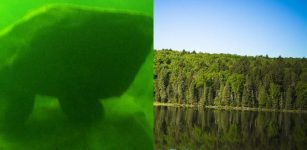 Mysterious Ancient Underwater Structure Beneath MacDonald Lake Reveals Traces Of A Lost Civilization In Ontario
Civilizations | Nov 15, 2018
Mysterious Ancient Underwater Structure Beneath MacDonald Lake Reveals Traces Of A Lost Civilization In Ontario
Civilizations | Nov 15, 2018 -
 Mysterious Ancient Underground King And Ruler Of The World – Who Was He? Part 1
Ancient Mysteries | Jul 25, 2018
Mysterious Ancient Underground King And Ruler Of The World – Who Was He? Part 1
Ancient Mysteries | Jul 25, 2018



